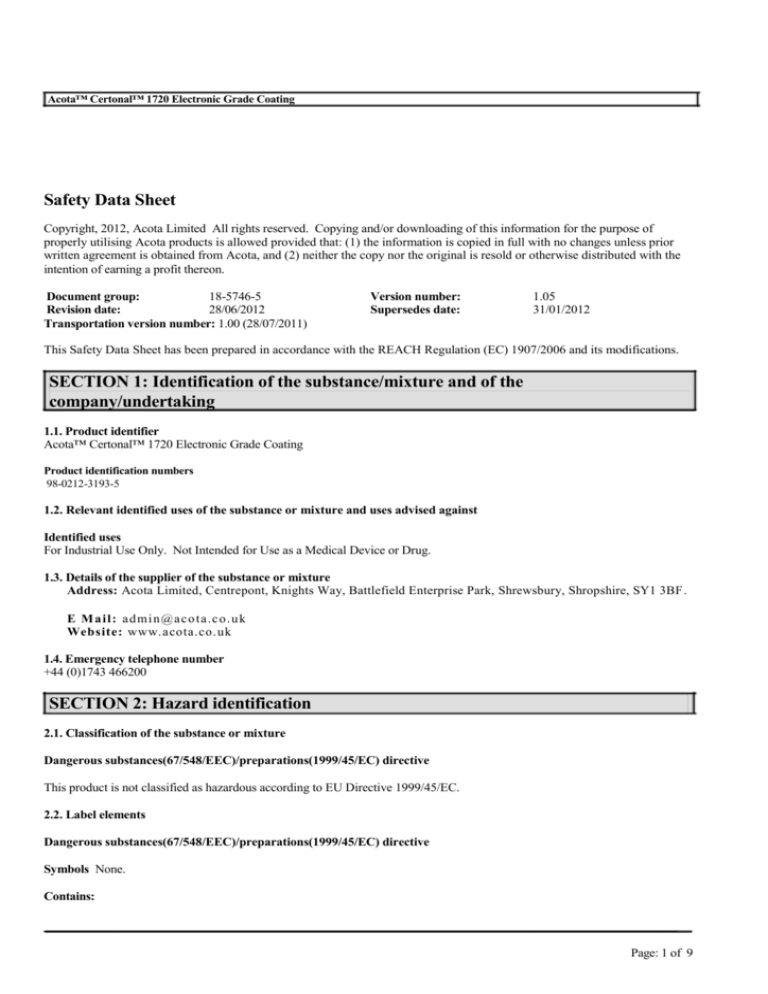
Acota™ Certonal™ 1720 Electronic Grade Coating
Safety Data Sheet
Copyright, 2012, Acota Limited All rights reserved. Copying and/or downloading of this information for the purpose of
properly utilising Acota products is allowed provided that: (1) the information is copied in full with no changes unless prior
written agreement is obtained from Acota, and (2) neither the copy nor the original is resold or otherwise distributed with the
intention of earning a profit thereon.
Document group:
18-5746-5
Revision date:
28/06/2012
Transportation version number: 1.00 (28/07/2011)
Version number:
Supersedes date:
1.05
31/01/2012
This Safety Data Sheet has been prepared in accordance with the REACH Regulation (EC) 1907/2006 and its modifications.
SECTION 1: Identification of the substance/mixture and of the
company/undertaking
1.1. Product identifier
Acota™ Certonal™ 1720 Electronic Grade Coating
Product identification numbers
98-0212-3193-5
1.2. Relevant identified uses of the substance or mixture and uses advised against
Identified uses
For Industrial Use Only. Not Intended for Use as a Medical Device or Drug.
1.3. Details of the supplier of the substance or mixture
Address: Acota Limited, Centrepont, Knights Way, Battlefield Enterprise Park, Shrewsbury, Shropshire, SY1 3BF.
E M a il: ad mi n @ aco ta.c o .u k
Website: www.acota.co.uk
1.4. Emergency telephone number
+44 (0)1743 466200
SECTION 2: Hazard identification
2.1. Classification of the substance or mixture
Dangerous substances(67/548/EEC)/preparations(1999/45/EC) directive
This product is not classified as hazardous according to EU Directive 1999/45/EC.
2.2. Label elements
Dangerous substances(67/548/EEC)/preparations(1999/45/EC) directive
Symbols None.
Contains:
__________________________________________________________________________________________
Page: 1 of 9
Acota™ Certonal™ 1720 Electronic Grade Coating
No ingredients are assigned to the label.
Risk phrases None.
Safety phrases None.
2.3. Other hazards
None known.
SECTION 3: Composition/information on ingredients
Ingredient
CAS Nbr EU Inventory % by Wt Classification
Methyl nonafluorobutyl ether (REACH
163702-07-6 ELINCS 42220 - 80
Reg. No.:01-0000016878-53)
270-2
Methyl nonafluoroisobutyl ether (REACH
163702-08-7 ELINCS 42220 - 80
Reg. No.:01-0000016878-53)
270-2
Fluoropolymer Trade Secret < 0.2
Please see section 16 for the full text of any R phrases and H statements referred to in this section
Please refer to section 15 for the any applicable Notas that have been applied to the above components
For information on ingredient occupational exposure limits or PBT or vPvB status, see sections 8 and 12 of this SDS
SECTION 4: First aid measures
4.1. Description of first aid measures
Eye contact
Flush with large amounts of water. Remove contact lenses if easy to do. Continue rinsing. If signs/symptoms persist, get
medical attention.
Skin contact
Wash with soap and water. If signs/symptoms develop, get medical attention.
Inhalation
Remove person to fresh air. If you feel unwell, get medical attention.
If swallowed
No need for first aid is anticipated.
4.2. Most important symptoms and effects, both acute and delayed
See Section 11.1 Information on toxicological effects
4.3. Indication of any immediate medical attention and special treatment required
Not applicable
SECTION 5: Fire-fighting measures
5.1. Extinguishing media
Material will not burn.
5.2. Special hazards arising from the substance or mixture
Exposure to extreme heat can give rise to thermal decomposition.
__________________________________________________________________________________________
Page: 2 of 9
Acota™ Certonal™ 1720 Electronic Grade Coating
5.3. Advice for fire-fighters
No unusual effects are anticipated during fire extinguishing operations. Avoid breathing the products and substances that may
result from the thermal decomposition of the product or the other substances in the fire zone. Keep containers cool with water
spray when exposed to fire to avoid rupture.
SECTION 6: Accidental release measures
6.1. Personal precautions, protective equipment and emergency procedures
Evacuate area. Ventilate the area with fresh air. Refer to other sections of this SDS for information regarding physical and
health hazards, respiratory protection, ventilation, and personal protective equipment.
6.2. Environmental precautions
Avoid release to the environment. For larger spills, cover drains and build dykes to prevent entry into sewer systems or
bodies of water.
6.3. Methods and material for containment and cleaning up
Contain spill. Working from around the edges of the spill inward, cover with bentonite, vermiculite, or commercially
available inorganic absorbent material. Mix in sufficient absorbent until it appears dry. Remember, adding an absorbent
material does not remove a toxic, corrosivity or flammability hazard. Collect as much of the spilled material as possible.
Place in a metal container approved for transportation by appropriate authorities. Clean up residue with an appropriate
solvent selected by a qualified and authorised person. Ventilate the area with fresh air. Read and follow safety precautions on
the solvent label and Safety Data Sheet. Seal the container. Dispose of collected material as soon as possible.
6.4. Reference to other sections
Refer to Section 8 and Section 13 for more information
SECTION 7: Handling and storage
7.1. Precautions for safe handling
Avoid skin contact with hot material. For industrial or professional use only. Store work clothes separately from other
clothing, food and tobacco products. Avoid breathing dust/fume/gas/mist/vapours/spray. Do not eat, drink or smoke when
using this product. Wash thoroughly after handling. No smoking: Smoking while using this product can result in
contamination of the tobacco and/or smoke and lead to the formation of hazardous decomposition products.
7.2. Conditions for safe storage including any incompatibilities
Keep container tightly closed. Store in a well-ventilated place. Store away from heat.
7.3. Specific end use(s)
See information in Section 7.1 and 7.2 for handling and storage recommendations. See Section 8 for exposure controls and
personal protection recommendations.
SECTION 8: Exposure controls/personal protection
8.1 Control parameters
Occupational exposure limits
No occupational exposure limit values exist for any of the components listed in Section 3 of this Safety Data Sheet.
8.2. Exposure controls
8.2.1. Engineering controls
Use general dilution ventilation and/or local exhaust ventilation to control airborne exposures to below relevant Exposure
Limits and/or control dust/fume/gas/mist/vapours/spray. If ventilation is not adequate, use respiratory protection equipment.
For those situations where the material might be exposed to extreme overheating due to misuse or equipment failure, use with
__________________________________________________________________________________________
Page: 3 of 9
Acota™ Certonal™ 1720 Electronic Grade Coating
appropriate local exhaust ventilation sufficient to maintain levels of thermal decomposition products below their exposure
guidelines.
8.2.2. Personal protective equipment (PPE)
Eye/face protection
The following eye protection(s) are recommended: Safety glasses with side shields.
Skin/hand protection
Gloves made from the following material(s) are recommended: Nitrile rubber.
Respiratory protection
Wear respiratory protection if ventilation is inadequate to prevent overexposure.
Thermal hazards
Wear heat insulating gloves when handling this material to prevent thermal burns.
SECTION 9: Physical and chemical properties
9.1. Information on basic physical and chemical properties
Physical state
Liquid.
Specific Physical Form:
Liquid.
Clear, colourless, liquid. Slight ethereal odour.
Appearance/Odour
Not applicable.
pH
Boiling point/boiling range
61 ºC [@ 101,324.72 Pa ]
Melting point
-135 ºC
Not classified
Flammability (solid, gas)
Explosive properties
Not classified
Not classified
Oxidising properties
Flash point
No flash point
Autoignition temperature
405 ºC [Details:(ASTM E659-84)]
Flammable Limits(LEL)
[Details:NONE acc to ASTM E681-94, @100C]
[Details:NONE acc to ASTM E681-94, @100C]
Flammable Limits(UEL)
Vapour pressure
26,931 Pa [@ 25 ºC ]
1.5 [Ref Std:WATER=1]
Relative density
Water solubility
< 12 ppm
Partition coefficient: n-octanol/water
Evaporation rate
Vapour density
No data available.
49 [Ref Std:BUOAC=1]
8.6 [Ref Std:AIR=1]
Viscosity
Density
0.001 Pa-s [@ 23 ºC ]
1.5 g/ml
9.2. Other information
Volatile organic compounds (VOC)
Percent volatile
VOC less H2O & exempt solvents
[Details:Exempt]
> 99 % weight
[Details:Exempt]
SECTION 10: Stability and reactivity
__________________________________________________________________________________________
Page: 4 of 9
Acota™ Certonal™ 1720 Electronic Grade Coating
10.1 Reactivity
This material may be reactive with certain agents under certain conditions - see the remaining headings in this section
10.2 Chemical stability
Stable.
10.3 Possibility of hazardous reactions
Hazardous polymerisation will not occur.
10.4 Conditions to avoid
Not determined
10.5 Incompatible materials
Strong bases.
10.6 Hazardous decomposition products
Substance
Hydrogen Fluoride
Perfluoroisobutylene (PFIB).
Condition
At elevated temperatures. - extreme conditions of
heat
At elevated temperatures. - extreme conditions of
heat
If the product is exposed to extreme conditions of heat from misuse or equipment failure, toxic decomposition products that
include hydrogen fluoride and perfluoroisobutylene can occur.
SECTION 11: Toxicological information
The information below may not be consistent with the material classification in Section 2 if specific ingredient
classifications are mandated by a competent authority. In addition, toxicological data on ingredients may not be
reflected in the material classification and/or the signs and symptoms of exposure, because an ingredient may be
present below the threshold for labelling, an ingredient may not be available for exposure, or the data may not be
relevant to the material as a whole.
11.1 Information on Toxicological effects
Signs and Symptoms of Exposure
Based on test data and/or information on the components, this material may produce the following health effects:
Eye contact
Vapours from heated material may cause eye irritation: Signs/symptoms may include redness, swelling, pain, tearing, and
blurred or hazy vision.
Skin contact
Contact with the skin during product use is not expected to result in significant irritation.
Inhalation
Vapours from heated material may cause irritation of the respiratory system: Signs/symptoms may include cough, sneezing,
nasal discharge, headache, hoarseness, nose and throat pain.
Ingestion
No health effects are expected.
__________________________________________________________________________________________
Page: 5 of 9
Acota™ Certonal™ 1720 Electronic Grade
Coating
Toxicological Data
Acute Toxicity
Name
Overall product
Route
Inhalation-Vapor(4
hr)
Ingestion
Species
Overall product
Methyl nonafluoroisobutyl ether
Methyl nonafluorobutyl ether
Fluoropolymer
Value
No test data available; calculated ATE >50
mg/l
No test data available; calculated ATE
>5,000 mg/kg
No data available
No data available
No data available
ATE = acute toxicity estimate
Skin Corrosion/Irritation
Name
Methyl nonafluoroisobutyl ether
Methyl nonafluorobutyl ether
Fluoropolymer
Serious Eye Damage/Irritation
Name
Methyl nonafluoroisobutyl ether
Methyl nonafluorobutyl ether
Fluoropolymer
Skin Sensitisation
Species
Rabbit
Value
Minimal irritation
No data available
No data available
Species
Rabbit
Value
Mild irritant
No data available
No data available
Species
Value
No data available
No data available
No data available
Species
Value
No data available
No data available
No data available
Route
Value
No data available
No data available
No data available
Name
Methyl nonafluoroisobutyl ether
Methyl nonafluorobutyl ether
Fluoropolymer
Respiratory Sensitisation
Name
Methyl nonafluoroisobutyl ether
Methyl nonafluorobutyl ether
Fluoropolymer
Germ Cell Mutagenicity
Name
Methyl nonafluoroisobutyl ether
Methyl nonafluorobutyl ether
Fluoropolymer
Carcinogenicity
Route
Species
Name
Methyl nonafluoroisobutyl ether
Methyl nonafluorobutyl ether
Fluoropolymer
Value
No data available
No data available
No data available
Reproductive Toxicity
Reproductive and/or Developmental
Effects
Route
Value
Name
Methyl
nonafluoroisobutyl
ether
Methyl
Species
Test result Exposure Duration
No data available
No data available
__________________________________________________________________________________________
Page: 6 of 9
Acota™ Certonal™ 1720 Electronic Grade Coating
nonafluorobutyl ether
Fluoropolymer
No data available
Target Organ(s)
Specific Target Organ Toxicity - single exposure
Name
Route
Target
Organ(s)
Methyl
nonafluoroiso
butyl ether
Methyl
nonafluorobut
yl ether
Fluoropolyme
r
Value
Species
Test result Exposure
Duration
No data available
No data available
No data available
Specific Target Organ Toxicity - repeated exposure
Name
Route
Target
Organ(s)
Methyl
nonafluoroiso
butyl ether
Methyl
nonafluorobut
yl ether
Fluoropolyme
r
Value
Species
Test result Exposure
Duration
No data available
No data available
No data available
Aspiration Hazard
Name
Methyl nonafluoroisobutyl ether
Methyl nonafluorobutyl ether
Fluoropolymer
Value
Not an aspiration hazard
Not an aspiration hazard
Not an aspiration hazard
Please contact the address or phone number listed on the first page of the SDS for additional toxicological information
on this material and/or its components.
SECTION 12: Ecological information
The information below may not be consistent with the material classification in Section 2 if specific ingredient classifications
are mandated by a competent authority. Additional information leading to material classification in Section 2 is available
upon request. In addition, environmental fate and effects data on ingredients may not be reflected in this section because an
ingredient is present below the threshold for labelling, an ingredient is not expected to be available for exposure, or the data
is considered not relevant to the material as a whole.
12.1. Toxicity
Acute aquatic hazard:
Not acutely toxic to aquatic life by GHS criteria.
Chronic aquatic hazard:
Not chronically toxic to aquatic life by GHS criteria.
No product test data available.
No component test data available.
__________________________________________________________________________________________
Page: 7 of 9
Acota™ Certonal™ 1720 Electronic Grade Coating
12.2. Persistence and degradability
No test data available.
12.3 : Bioaccumulative potential
No test data available.
12.4. Mobility in soil
Please contact manufacturer for more details
12.5. Results of the PBT and vPvB assessment
No information available at this time, contact manufacturer for more details
12.6. Other adverse effects
No information available.
SECTION 13: Disposal considerations
13.1 Waste treatment methods
Dispose of contents/ container in accordance with the local/regional/national/international regulations
This product has been classified as a non-hazardous waste. Prior to disposal, consult all applicable authorities and regulations
to insure proper classification. Dispose of waste product in a permitted industrial waste facility. As a disposal alternative,
incinerate in a permitted waste incineration facility.
The coding of a waste stream is based on the application of the product by the consumer. Since this is out of the control of
Acota, no waste code(s) for products after use will be provided. Please refer to the European Waste Code (EWC - 2000/532/EC
and amendments) to assign the correct waste code to your waste stream. Ensure national and/or regional regulations are
complied with and always use a licensed waste contractor.
EU waste code (product as sold)
070103*
Organic halogenated solvents, washing liquids and mother liquors
SECTION 14: Transportation information
98-0212-3193-5
Not hazardous for transportation
SECTION 15: Regulatory information
15.1. Safety, health and environmental regulations/legislation specific for the substance or mixture
Global inventory status
All applicable chemical ingredients in this material are listed on the European Inventory of Existing Chemical Substances
(EINECS), or are exempt polymers whose monomers are listed on EINECS. Contact Acota for more information. The
components of this material are in compliance with the provisions of Philippines RA 6969 requirements. Certain restrictions
may apply. Contact the selling division for additional information. The components of this product are in compliance with
the chemical notification requirements of TSCA.
15.2. Chemical Safety Assessment
Not applicable
__________________________________________________________________________________________
Page: 8 of 9
Acota™ Certonal™ 1720 Electronic Grade Coating
SECTION 16: Other information
Revision information:
Revision Changes:
Aspiration Hazard Table was modified.
Section 11: Acute Toxicity table was modified.
Carcinogenicity Table was modified.
Serious Eye Damage/Irritation Table was modified.
Germ Cell Mutagenicity Table was modified.
Skin Sensitisation Table was modified.
Respiratory Sensitisation Table was modified.
Reproductive Toxicity Table was modified.
Skin Corrosion/Irritation Table was modified.
Target Organs - Repeated Table was modified.
Target Organs - Single Table was modified.
Section 8: Appropriate Engineering controls information was modified.
Section 11: UN GHS Classification table heading was deleted.
DISCLAIMER: The information on this Safety Data Sheet is based on our experience and is correct to the best of our
knowledge at the date of publication, but we do not accept any liability for any loss, damage or injury resulting from its use
(except as required by law). The information may not be valid for any use not referred to in this Data Sheet or use of the
product in combination with other materials. For these reasons, it is important that customers carry out their own test to
satisfy themselves as to the suitability of the product for their own intended applications.
Acota United Kingdom MSDSs are available at www.acota.co.uk
__________________________________________________________________________________________
Page: 9 of 9

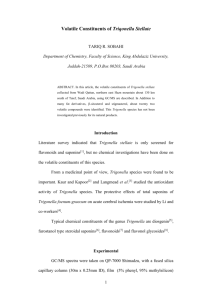
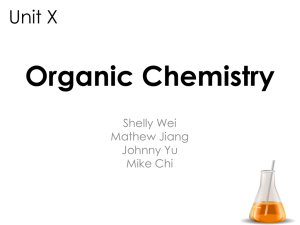

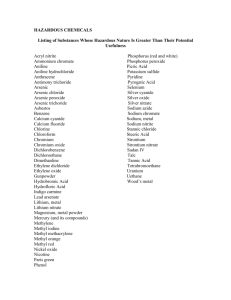
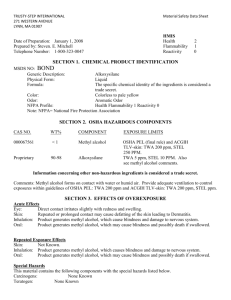
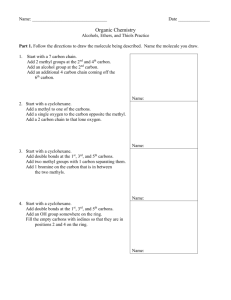

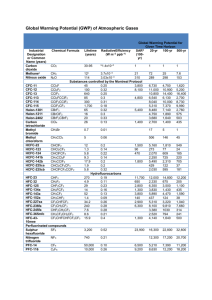
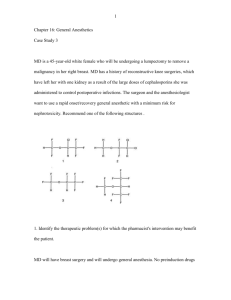
![AL Chem Written Practical (Organic Chemistry) [F.7]](http://s2.studylib.net/store/data/005797652_1-4911d95dd6c8a0840f727bd387aa6027-300x300.png)